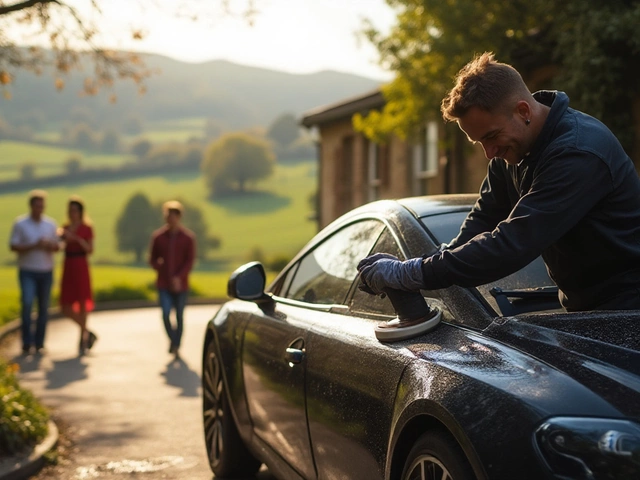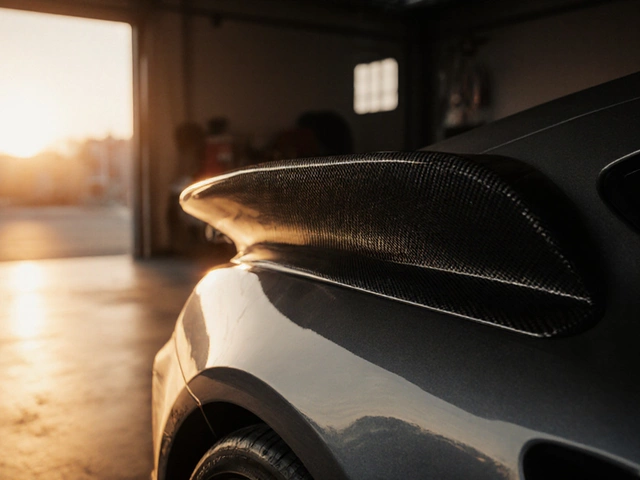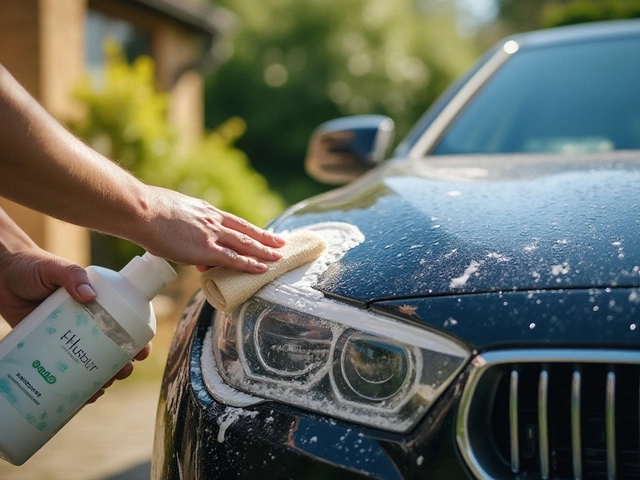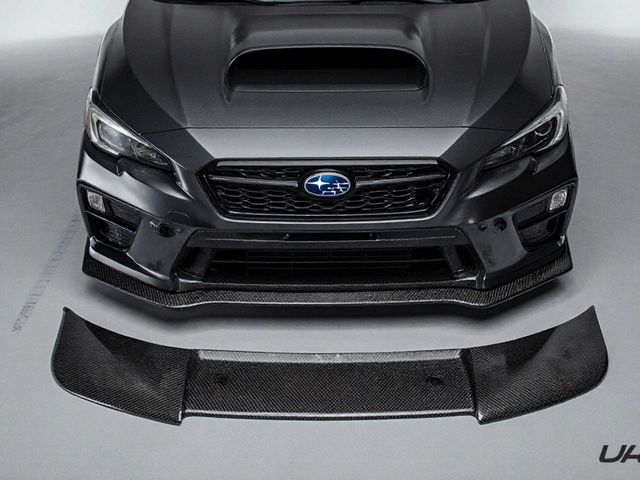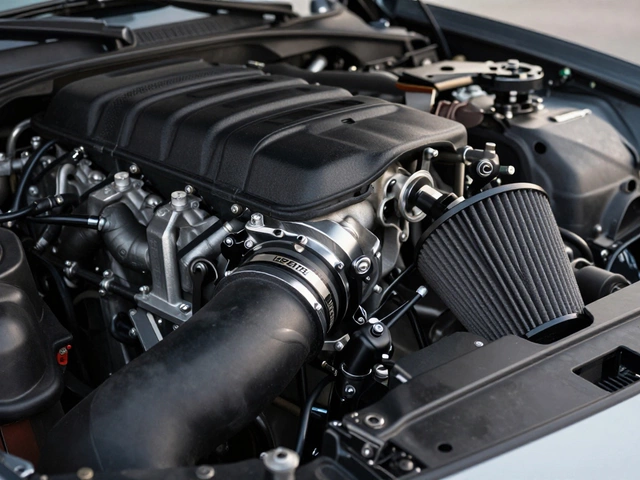Decibel Level Comparison Calculator
What this sounds like:
82 dB is about as loud as a busy city street during rush hour. Or a vacuum cleaner running a few feet away.
Perceived loudness:
This is 400% louder than a normal conversation (60 dB).
Legal assessment:
This level may exceed legal limits in most residential areas.
Recommendations:
To stay within legal limits (typically 80 dB), consider adding a resonator or switching to a tuned system.
Ever heard a car roll by with a custom exhaust and thought, “That’s not too bad…” - then checked a decibel meter and saw it’s hitting 82 dB? You’re not alone. Most people have no real idea what 82 dB actually sounds like. It’s not a roar. It’s not a jet engine. But it’s also not quiet. In fact, 82 dB is the sweet spot where most custom exhausts cross the line from “sporty” to “annoying” - especially in residential areas, near schools, or during early morning cruises.
What 82 dB Actually Sounds Like
82 decibels is about as loud as a busy city street during rush hour. Or a vacuum cleaner running a few feet away. Or a power lawn mower at full throttle. If you’ve ever stood near a diesel truck idling at a traffic light, or sat in a café next to a group of people shouting over loud music, you’ve heard 82 dB. It’s not ear-splitting, but it’s impossible to ignore. You feel it in your chest. You notice it when you’re trying to talk to someone next to you. And yes - your neighbors notice it too.
Compare that to a normal conversation, which is around 60 dB. Or a quiet library, at 40 dB. Now imagine turning up the volume on that conversation by 22 dB. That’s not just a little louder. That’s a 400% increase in perceived loudness. Human ears don’t work linearly - every 10 dB increase feels like the sound doubled in intensity. So 82 dB doesn’t just sound louder than 72 dB - it sounds way louder.
Why 82 dB Matters for Custom Exhausts
Most aftermarket exhaust systems are marketed as “aggressive,” “deep,” or “performance-tuned.” But few manufacturers list the actual decibel output. That’s because 82 dB is the unofficial threshold where local noise ordinances start to kick in. In Brisbane, where I live, council bylaws limit vehicle noise to 80 dB at 20 meters during daytime hours. That means an 82 dB exhaust is already breaking the rules - even if the driver doesn’t realize it.
And it’s not just about fines. A car that hits 82 dB is often flagged by police using handheld sound meters during routine patrols. In 2024, Queensland Transport reported over 1,200 noise complaints tied to modified exhausts - up 37% from 2022. Most of those came from vehicles with aftermarket systems tuned to 80-85 dB. That’s not a coincidence. It’s the result of exhaust shops pushing “loud” as a selling point without explaining the real-world consequences.
How Exhaust Design Affects Decibel Levels
Not all 82 dB exhausts are created equal. A straight-through performance muffler with no baffles will hit 82 dB at idle and climb to 95 dB under full throttle. That’s a recipe for trouble. But a well-tuned dual-chamber system - say, one from a brand like Borla or MagnaFlow - can hit 82 dB only at wide-open throttle and stay under 75 dB at cruising speeds. The difference? Internal design, materials, and tuning.
Here’s what actually changes the sound:
- Resonators: These cancel out certain frequencies. A system with two resonators can drop the dB level by 5-8 dB without killing performance.
- Muffler packing: Steel wool or fiberglass packing absorbs high-pitched noise. A packed muffler might sound deeper and quieter, even if it’s still loud under load.
- Pipe diameter: Larger pipes (3 inches or more) reduce backpressure but can increase volume. A 2.5-inch system often hits 82 dB more consistently than a 3.5-inch one.
- Exhaust tip design: A flared tip can direct sound upward and away from the ground - reducing perceived noise for pedestrians.
Many people think “no muffler = louder.” That’s only half true. The real issue is the lack of sound absorption. A true performance exhaust doesn’t remove mufflers - it uses advanced acoustics to control how the sound is released.
What 82 dB Feels Like in Real Life
Picture this: It’s Saturday morning. You’re sipping coffee on your porch. A car rolls down the street - a modified Subaru with a straight-pipe exhaust. You hear it before you see it. The engine growls as it idles at the corner. It revs up - a sharp, metallic bark - then fades as it pulls away. Your dog barks. Your neighbor yells from their balcony, “Can you turn that thing off?!”
That’s 82 dB in action. It’s not constant. It’s unpredictable. It spikes. It echoes off buildings. It wakes up babies. It makes people angry. And in a city like Brisbane, where houses sit close together and many people work from home, that kind of noise isn’t just rude - it’s illegal.
One owner I spoke to in Logan City installed a “quiet” 3-inch exhaust. He thought he was being smart. He wasn’t. At 82 dB, his car still triggered two noise complaints in three weeks. He ended up replacing the entire system with a Borla ATAK - which, surprisingly, measured at 78 dB under load. Why? Because it had a tuned resonator chamber that killed the high-frequency whine without sacrificing the low-end rumble.
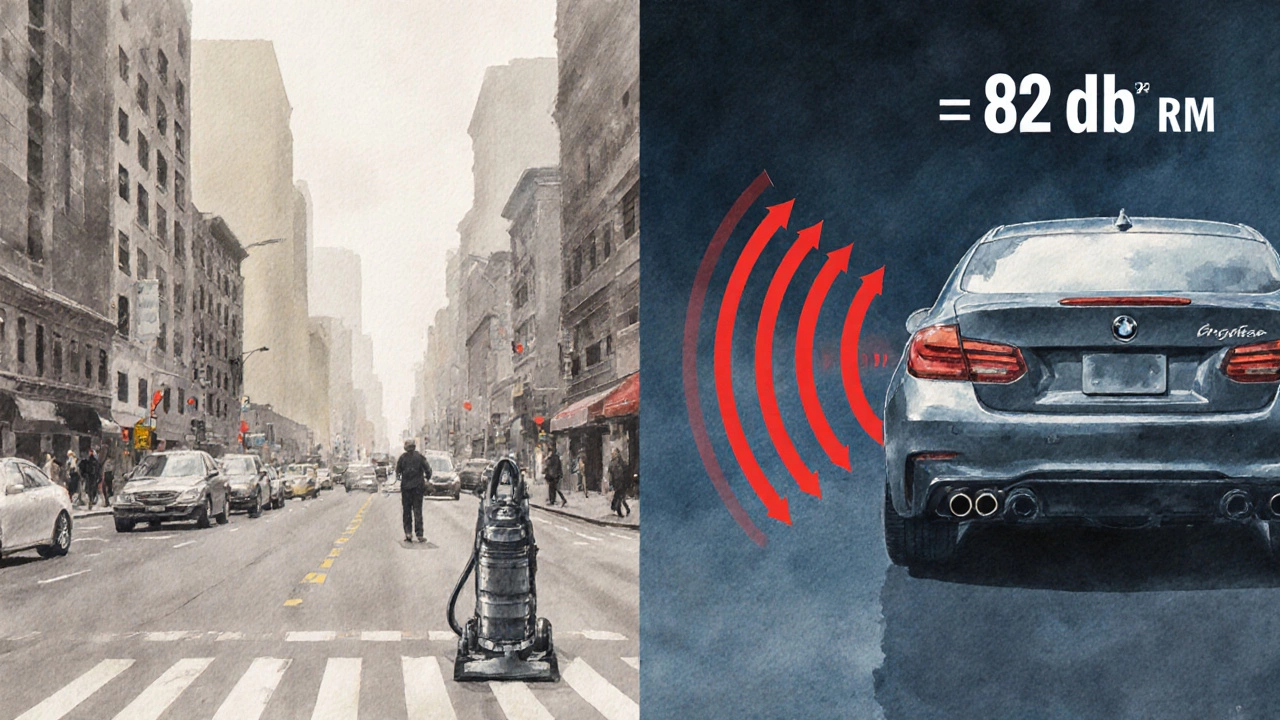
How to Test Your Exhaust’s Noise Level
You don’t need a professional sound meter to know if your exhaust is too loud. Here’s how to check it yourself:
- Stand 20 meters away from your car (about two parking spaces).
- Have someone sit in the driver’s seat and rev the engine to 3,000 RPM - steady, not revving up and down.
- Listen. If you can clearly hear the engine note over background traffic, wind, or birds, it’s likely over 80 dB.
- Try talking to someone standing next to you. If you have to raise your voice, you’re over 82 dB.
- Use a free decibel meter app on your phone (like Sound Meter or Decibel X). Hold the phone at ear height, 1 meter from the tailpipe. Don’t point it directly at the exhaust - aim it at a 45-degree angle to mimic how a cop would measure.
Pro tip: Apps aren’t perfect. They can be off by ±3 dB. But if your phone reads 79-83 dB, you’re in the danger zone. If it’s below 75 dB, you’re probably fine. Above 85 dB? You’re asking for trouble.
What’s the Right Level for a Custom Exhaust?
There’s no magic number. But here’s a simple rule: if your exhaust sounds good at idle and doesn’t make people flinch when you pass, you’re probably good. If it sounds like a chainsaw revving at stoplights, you’re not.
Most experienced tuners recommend staying under 80 dB at 20 meters under normal driving conditions. That means:
- Under 75 dB at idle
- Under 80 dB at 3,000 RPM
- Under 85 dB at full throttle - and only briefly
Systems that meet these levels still sound aggressive. They still have presence. They still turn heads. But they don’t turn neighbors into enemies.
Brands like Akrapovič, Borla, and Corsa have spent years tuning systems that hit this balance. They’re not cheap - but they’re worth it if you care about your reputation, your license, and your peace of mind.
Why People Keep Ignoring the 82 dB Rule
It’s easy to blame the driver. But the real problem is marketing. Exhaust shops sell “loud” as a feature. YouTube influencers post videos with captions like “This exhaust is 95 dB - you won’t believe how loud it is!” - and no one mentions that 95 dB is louder than a chainsaw. That’s misleading. And dangerous.
People buy exhausts because they want their car to sound powerful. They don’t realize that 82 dB isn’t power - it’s noise pollution. And in 2025, with more people working from home and stricter enforcement, that’s a liability.
There’s a difference between a deep, throaty exhaust and a screeching, high-pitched one. The former can be tuned to stay under 80 dB. The latter? It’s just annoying.
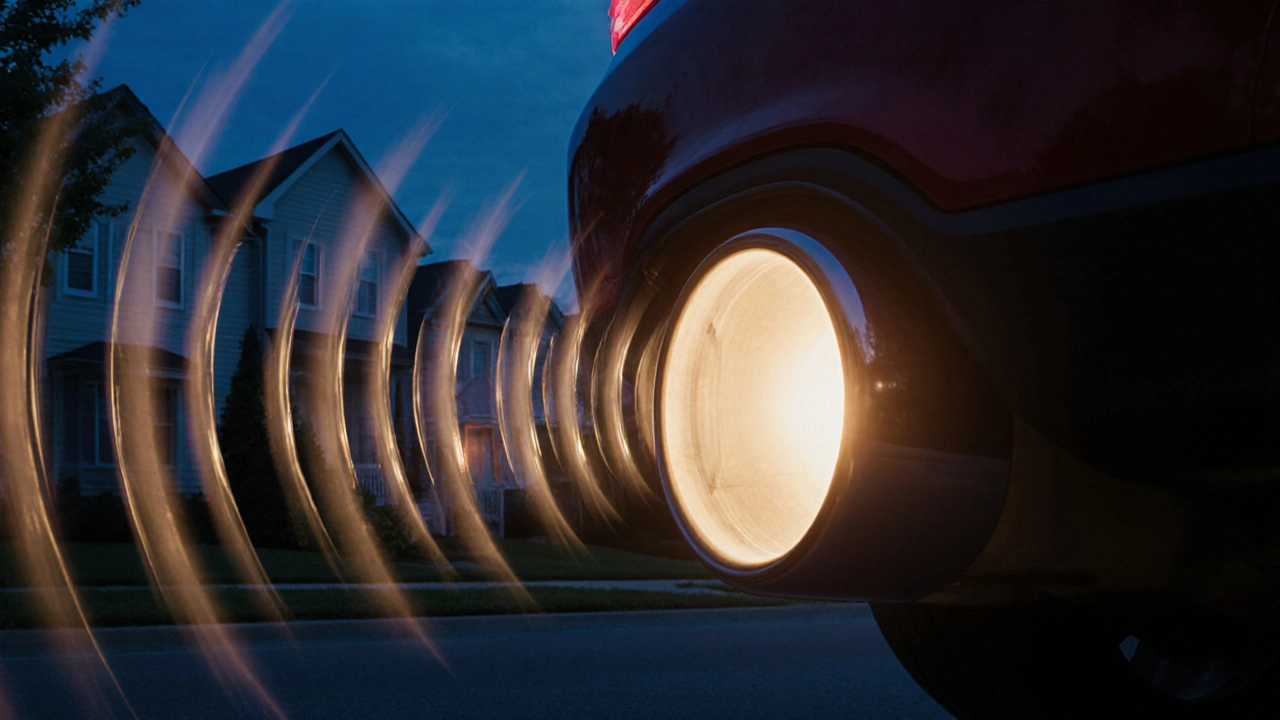
What Happens When You Get Caught
In Queensland, a noise violation for a modified exhaust can cost you $300-$500. But that’s just the fine. You’ll also get a defect notice. That means you have 14 days to fix it - or your registration gets suspended. No exceptions. No appeals. Just a paper telling you your car is illegal until the exhaust is replaced.
And if you’re caught twice? Your car can be impounded. Yes, really. In 2023, a man in Redcliffe had his Nissan Skyline seized after three noise complaints in six months. He spent $2,500 on a new exhaust - and still had to pay $800 in towing and storage fees.
It’s not worth it.
What to Do If You Already Have an 82 dB Exhaust
Don’t panic. You don’t need to rip it out. Here’s what actually works:
- Install a resonator or silencer insert - they cost under $100 and can drop dB levels by 5-8.
- Swap out the exhaust tips for ones with internal baffles - they reduce high-frequency noise.
- Use a valve system (like those from GHL or Invidia) that closes at low RPM - keeps it quiet around the neighborhood, opens up on the track.
- Switch to a system with a tuned muffler - even a budget one from Flowmaster can make a huge difference.
One guy in Ipswich added a $65 resonator to his straight-pipe Ford Mustang. His dB reading dropped from 84 to 76. He didn’t lose power. He didn’t lose the sound. He just lost the complaints.
Final Thought: Loud Isn’t Better
Custom exhausts are about expression. But expression shouldn’t come at the cost of respect. An 82 dB exhaust doesn’t make you sound faster. It makes you sound inconsiderate. And in a city where people live close together, that matters.
There’s a middle ground. You can have a deep, aggressive tone without turning your car into a noise weapon. You just need to know what 82 dB really sounds like - and choose a system that respects the space around you.
Because the best exhaust doesn’t shout. It commands attention - quietly.
Is 82 dB considered loud for a car exhaust?
Yes. 82 dB is considered loud for a car exhaust in most urban areas. It’s equivalent to the noise of a busy street or a lawnmower. In places like Brisbane, this exceeds legal limits (usually 80 dB at 20 meters), and it’s enough to trigger noise complaints from neighbors or police.
Can I legally drive with an 82 dB exhaust in Australia?
In most Australian states, including Queensland, an exhaust that measures 82 dB at 20 meters is illegal. The legal limit is typically 80 dB for passenger vehicles during daytime hours. Even if you don’t get pulled over, you can still receive a defect notice that requires you to fix the exhaust or lose your registration.
What’s the difference between 75 dB and 82 dB on a custom exhaust?
The difference is huge. 75 dB is noticeable but not intrusive - you’ll hear it, but you won’t feel it. 82 dB is loud enough to be felt in your chest and to drown out normal conversation. It’s a 400% increase in perceived loudness. A 75 dB exhaust is street-friendly; 82 dB is likely to get you reported.
Do resonators make an exhaust quieter without losing performance?
Yes. Resonators don’t reduce power - they cancel out unwanted frequencies, especially high-pitched drone. A well-placed resonator can drop noise levels by 5-8 dB without affecting horsepower or torque. Many performance exhausts include them for this exact reason.
How can I measure my exhaust’s decibel level at home?
Use a free smartphone app like Sound Meter or Decibel X. Stand 20 meters from your car, have someone rev the engine to 3,000 RPM, and hold the phone at ear height, angled 45 degrees from the tailpipe. Don’t point directly at the exhaust. Readings between 78-83 dB mean you’re in the danger zone.
What’s the quietest loud exhaust I can get?
The quietest loud exhausts use tuned chambers, internal baffles, and resonators to suppress high frequencies while keeping low-end rumble. Brands like Borla, MagnaFlow, and Corsa offer systems that hit 78-80 dB under load - aggressive enough to sound performance-oriented, but legal and neighbor-friendly.


